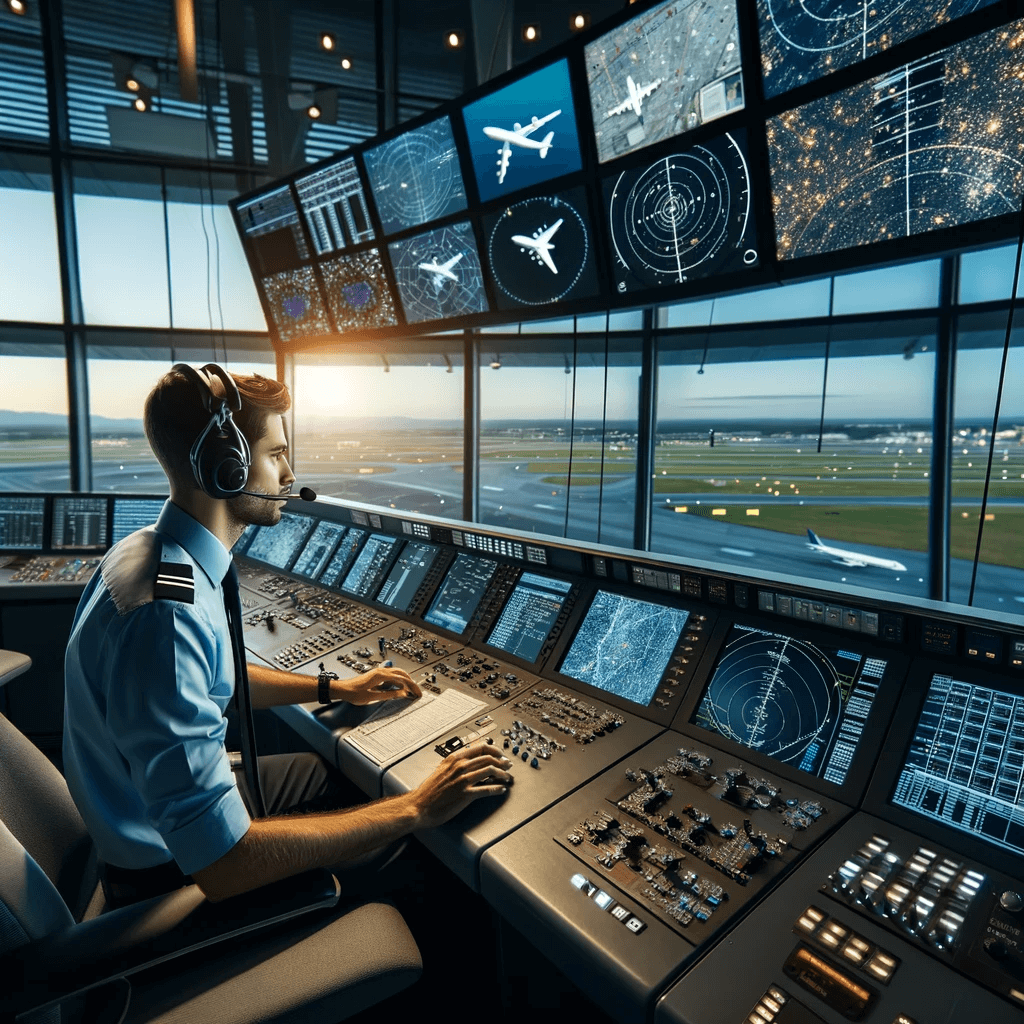Air Traffic Control System Modernization: Solutions To The Location Uncertainty Problem ("I Don't Know Where You Are")

Table of Contents
The Challenges of Location Uncertainty in Air Traffic Control
Location uncertainty in air traffic management presents a significant threat to aviation safety and efficiency. Several factors contribute to this problem:
-
Aircraft Tracking Errors: Inaccurate or outdated technologies can lead to imprecise location data, creating gaps in the real-time picture of aircraft positions. This is exacerbated by reliance on older radar systems with limited precision and coverage.
-
GPS Signal Interference: GPS, while revolutionary, is susceptible to interference from various sources, including weather conditions, atmospheric disturbances, and even intentional jamming. This interference can lead to significant deviations in reported aircraft positions.
-
Outdated Technology: Many air traffic control systems still rely on older, less precise technologies, hindering accurate aircraft tracking. This reliance on outdated infrastructure creates vulnerabilities and increases the risk of errors.
-
Weather Impacts: Severe weather events can disrupt GPS signals and interfere with radar performance, limiting the accuracy of aircraft location data and significantly impacting air traffic management.
These challenges translate into serious risks:
-
Increased risk of mid-air collisions: Inaccurate location data increases the risk of near-miss incidents and potentially catastrophic mid-air collisions.
-
Inefficient airspace management leading to delays: Uncertainty about aircraft positions leads to more conservative spacing between aircraft, resulting in delays and reduced airspace capacity.
-
Difficulties in emergency response situations: In case of an emergency, precise location information is critical for timely and effective rescue operations. Uncertainty can significantly hamper rescue efforts.
-
Increased workload for air traffic controllers: Dealing with imprecise location data necessitates increased vigilance and workload for air traffic controllers, leading to potential human error.
-
Higher fuel consumption due to inefficient routing: Less precise tracking can result in inefficient routing, leading to increased fuel consumption and higher operating costs for airlines.
Advanced Technologies for Enhanced Aircraft Tracking
Modernizing air traffic control systems requires implementing advanced technologies that enhance aircraft tracking accuracy and reliability. Key solutions include:
-
ADS-B (Automatic Dependent Surveillance-Broadcast): ADS-B utilizes GPS to determine an aircraft's position and broadcasts this information to ground stations. It offers significant advantages over older radar systems, including increased accuracy, cost-effectiveness, and broader coverage.
-
GPS/GNSS (Global Navigation Satellite System): While susceptible to interference, GPS and other GNSS systems provide global coverage and are crucial for determining aircraft positions. Improvements in GNSS technology are constantly being developed to mitigate the impact of interference and inaccuracies.
-
Multilateration: This ground-based system uses multiple ground stations to triangulate the position of an aircraft, providing an independent means of tracking without relying solely on aircraft-reported data. Wide Area Multilateration (WAM) extends this capability over broader geographical areas.
-
Radar Upgrades: Modernizing radar systems with improved technology and higher resolution enhances the accuracy and reliability of ground-based tracking capabilities.
-
Data Fusion: Integrating data from various sources (ADS-B, GPS, radar, etc.) through data fusion techniques provides a more comprehensive and accurate picture of aircraft positions. This approach combines the strengths of individual technologies to compensate for their limitations.
Implementing and Integrating New Technologies
The transition to improved aircraft tracking technologies presents significant logistical challenges. Upgrading ATC infrastructure, integrating new software and systems, and ensuring interoperability between different components are essential considerations. Seamless data integration is crucial for a unified and comprehensive view of air traffic. Successful implementations such as NextGen (the Next Generation Air Transportation System in the USA) and SESAR (the Single European Sky ATM Research) demonstrate the feasibility and benefits of such modernization efforts. These initiatives involve substantial investments in infrastructure, software development, and personnel training.
The Future of Air Traffic Control: Towards a Fully Automated System?
The future of air traffic control points towards increased automation, leveraging the power of artificial intelligence (AI) and machine learning (ML). These technologies can analyze vast amounts of data from multiple sources to enhance situational awareness, predict potential conflicts, and optimize air traffic flow. Furthermore, the rise of unmanned aircraft systems (UAS) or drones necessitates the development of sophisticated drone traffic management systems. Integrating AI and ML into ATC systems will be crucial for managing the increasing complexity and volume of air traffic, including both manned and unmanned aircraft. The Next Generation Air Transportation System (NextGen) continues to be at the forefront of these developments, driving innovation in this crucial area.
Conclusion
Location uncertainty in air traffic control poses a significant risk to air safety and efficiency. However, advanced technologies like ADS-B, GPS/GNSS improvements, multilateration, and data fusion offer effective solutions. Successful modernization of air traffic control systems, such as those seen in NextGen and SESAR, demonstrate that addressing the "I don't know where you are" problem is achievable. Investing in Air Traffic Control System Modernization is paramount to enhancing air safety, optimizing air traffic flow, and ensuring the continued growth and safety of the aviation industry. We urge readers to learn more about ATC modernization initiatives in their region and advocate for continued investment in advanced aircraft tracking technologies to improve global air safety. Promote further research on Air Traffic Control System Modernization to ensure the continuous improvement and development of safer and more efficient skies.

Featured Posts
-
 Bacow Faces Trumps Criticism A Harvard Perspective
May 07, 2025
Bacow Faces Trumps Criticism A Harvard Perspective
May 07, 2025 -
 New York Yankees 2000 Failed Comeback 500 Season Summary
May 07, 2025
New York Yankees 2000 Failed Comeback 500 Season Summary
May 07, 2025 -
 Alex Ovechkins Future With Dynamo Moscow President Comments On Advisory Role And Management Possibilities
May 07, 2025
Alex Ovechkins Future With Dynamo Moscow President Comments On Advisory Role And Management Possibilities
May 07, 2025 -
 Family Dynamics Ayesha Currys Perspective On Marriage And Children
May 07, 2025
Family Dynamics Ayesha Currys Perspective On Marriage And Children
May 07, 2025 -
 Privilege Dilemma Wto Accessions Fast Track
May 07, 2025
Privilege Dilemma Wto Accessions Fast Track
May 07, 2025
